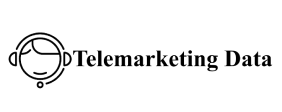A well-structured email marketing database is the cornerstone of successful email campaigns. It provides the foundation for targeted messaging, improved engagement, and higher ROI. In this article, we’ll delve into the strategies for building and maintaining a high-quality database.
Understanding the Importance of a Strong Email Marketing Database
A robust database allows you to:
- Segment your audience: Target specific groups with tailored messages.
- Personalize your content: Deliver relevant South-Korea Phone Number and engaging content to individual subscribers.
- Measure performance: Track key metrics to assess campaign effectiveness.
- Optimize your campaigns: Make data-driven decisions to improve results.
Building Your Email Marketing Database Buy South-Korea Phone data
-
Organic Growth:
- Website Sign-up Forms: Create compelling forms with clear benefits.
- Social Media: Promote your email list on platforms like Facebook and Instagram.
- Content Marketing: Offer valuable content in exchange for email addresses.
- In-Person Events: Collect emails at conferences, workshops, and events.
-
Paid Acquisition:
- Email List Purchases: Purchase pre-built lists from reputable providers.
- Paid Advertising: Use platforms like America Cell Phone Number Example Google Ads to drive traffic to sign-up forms.
Data Collection and Quality Buy South-Korea Phone data
- Double Opt-in: Require subscribers to confirm their email address.
- Data Cleaning: Regularly remove inactive or invalid addresses.
- Data Enrichment: Add additional information about subscribers, such as demographics or interests.
Database Segmentation and Personalization
- Segment Your List: Divide your list into smaller, more targeted segments based on demographics, interests, behavior, or purchase history.
- Personalize Your Messages: Tailor content to specific segments or individuals.
Data Privacy and Compliance
- GDPR and Other Regulations: Adhere to data privacy laws to protect subscriber information.
- Consent Management: Obtain clear consent from BHB Directory subscribers before collecting and using their data.
- Data Security: Implement measures to protect your database from unauthorized access.
Database Management and Maintenance
- Regular Updates: Keep your database up-to-date with subscriber changes.
- Data Backup: Regularly back up your database to prevent data loss.
- Performance Tracking: Monitor key metrics like open rates, click-through rates, and conversions.
Leveraging Your Email Marketing Database
- A/B Testing: Experiment with different subject lines, content, and calls to action to optimize your campaigns.
- Automation: Use automation tools to send triggered emails based on subscriber behavior.
- Segmentation and Personalization: Tailor your messages to specific segments for better engagement.
- Data-Driven Decision Making: Use insights from your database to inform your marketing strategy.
Common Mistakes to Avoid
- Purchasing Low-Quality Lists: Avoid buying lists that may contain invalid or spam email addresses.
- Neglecting Data Hygiene: Regularly clean and update your database to maintain accuracy.
- Over-Sending: Avoid bombarding subscribers with too many emails.
- Ignoring Feedback: Pay attention to subscriber feedback and make adjustments accordingly.
By following these guidelines, you can build and maintain a robust email marketing database that drives results. A well-curated database is a valuable asset that can help you achieve your marketing goals and foster long-term relationships with your customers.


